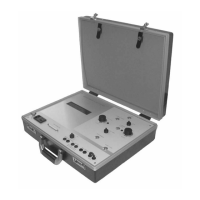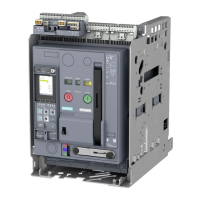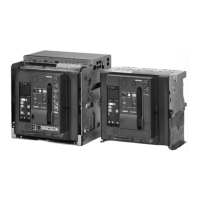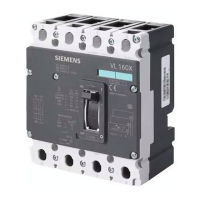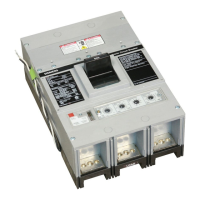The selective behavior of circuit breakers can be implemented technically by a variety of
selectivity concepts:
• Current selectivity
The selectivity can be calculated in the overload range by comparing the time/current
characteristics. In the short-circuit range, this comparison leads to values that are too low.
The reason for this is that the trip unit behaves dierently in the case of short-circuit currents
compared to its long-term behavior, e.g. in the case of overload.
If the short-circuit currents dier suciently at the points where two circuit breakers are
mounted, the instantaneous short-circuit releases can normally be set such that if a short-
circuit occurs behind one of the circuit breakers as seen from the other circuit breaker, only
the circuit breaker nearest to the fault will trip.
If the short-circuit currents are approximately the same at the points where the circuit
breakers are mounted, the time grading of the operating currents of the short-circuit releases
only enables selectivity up to a specic short-circuit current.
• Time selectivity (strong characteristic of the 3WL10air circuit breaker)
Up to the operating values of the instantaneous short-circuit releases, selectivity can be
achieved by time selectivity. To achieve this, the upstream circuit breaker requires a time
delay provided by a time-delayed short-circuit release so that, in the event of a fault, only the
circuit breaker closest to the fault location has time to disconnect the part of the installation
with the fault from the power system.
Both the tripping delays and the tripping currents of the short-circuit releases are graded.
You will nd more information in the manual on selectivity (see Reference documents
(Page10)).
Selectivity with 3VA27 molded case circuit breakers
The 3VA27 circuit breaker is designed for selective (discriminating) tripping behavior in
conjunction with both high breaking capacity and high current limitation.
Energy selectivity and dynamic selectivity
For energy selectivity and dynamic selectivity, the tested devices are graded toward the end
load as follows:
The arising short-circuit energy and the current rise in case of a fault ensure that the contact
of the switching device directly upstream of the fault location open fastest, already within
the rst half cycle, limiting and nally quenching the current. The other upstream protection
devices in the chain with the fault are set to a much slower response by the contact system.
For this reason, these devices, which may also be current-limiting, do not trip.
Summary: It is possible and quite common to combine these selectivity principles.
For protection requirements that apply more to the higher level and parts of the circuit near
to a transformer, devices must be selected that are better capable of time selectivity on a
short-circuit - i.e. use of a 3WL10.
For protection requirements applying to the outgoing side and parts of the circuit near to the
nal load, devices are selected that are better at energy selectivity - i.e. use of a 3VA27.
In addition to short-circuit considerations, complete coordination of the current selectivity
throughout the chain is an important part of the conguration, especially in the overload
range.
Description
2.9Electronic trip unit ETU
3VA27 molded case circuit breakers & 3WL10 air circuit breakers
Equipment Manual, 10/2023, L1V30499596002-03 47
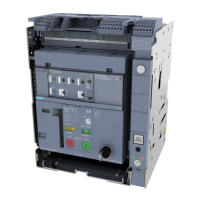
